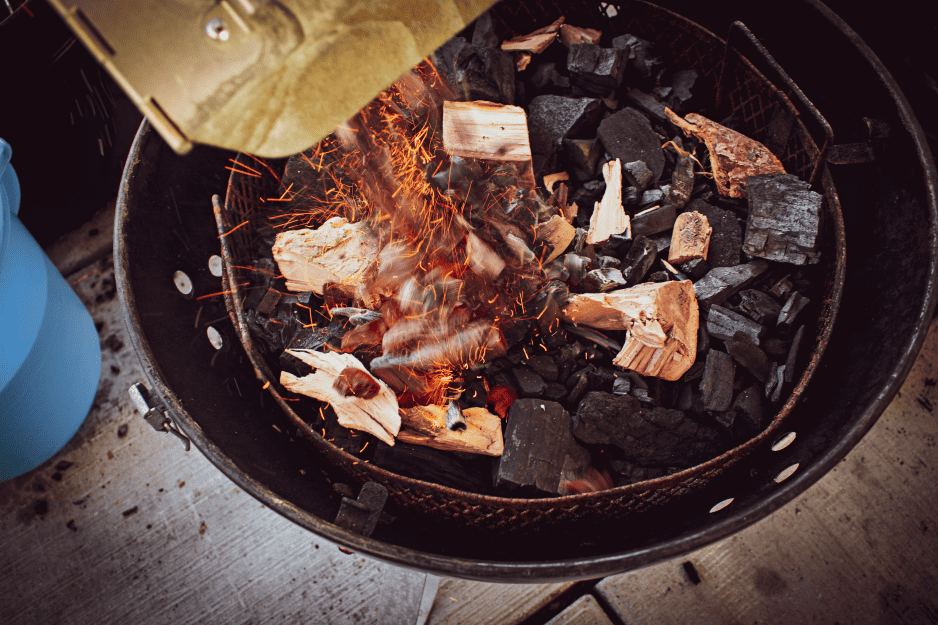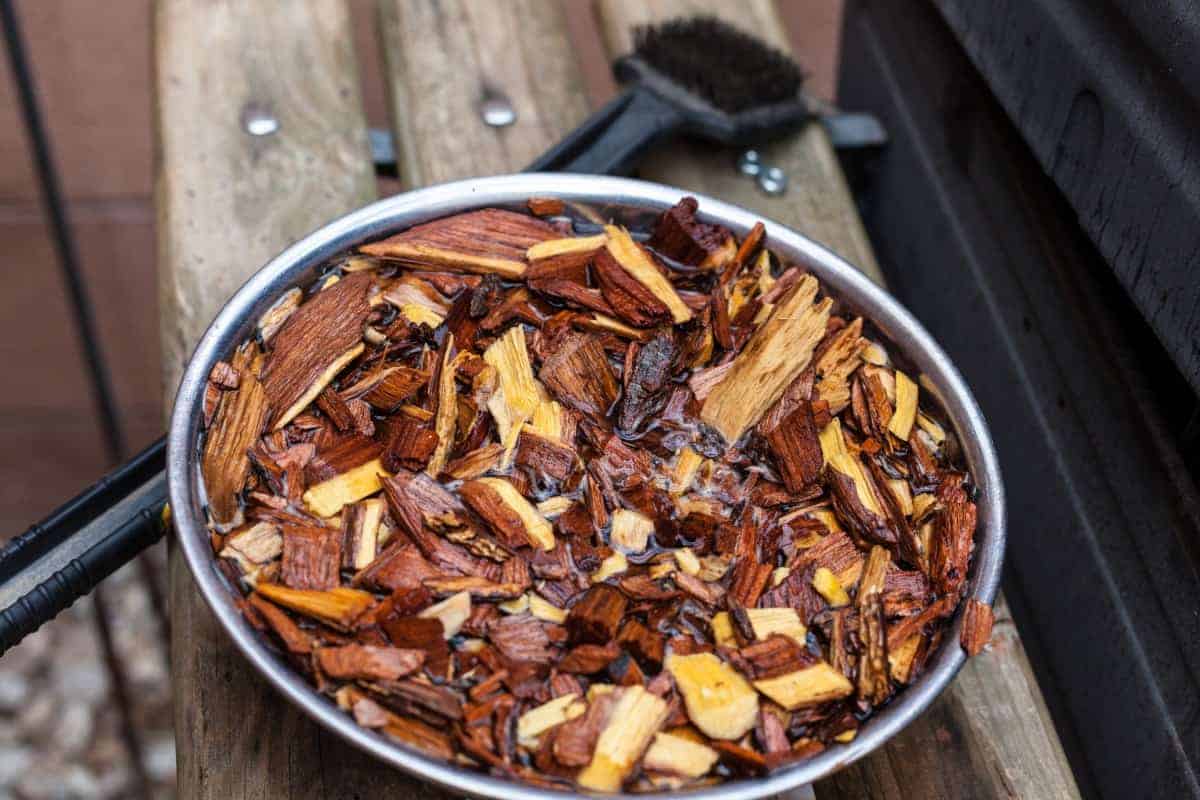Master the Art of Smoking with Wood Chips: A Beginner’s Guide
How to use wood chips in a smoker? To use wood chips in a smoker, soak them in water for 30 minutes, then place them directly onto hot coals or in a smoker box for gas or electric smokers to generate flavorful smoke during the cooking process.
Smoking with wood chips is a culinary technique that has been used for centuries to infuse meats with a rich, smoky flavor. It involves the slow cooking of meat over indirect heat, using wood chips as a source of smoke. The process not only adds incredible flavor to the meat but also helps to tenderize it, resulting in juicy and succulent dishes.
One of the main benefits of smoking with wood chips is the unique and complex flavors it imparts on the meat. Different types of wood chips produce different flavors, allowing you to experiment and create your own signature dishes. Whether you prefer a mild and sweet flavor or a bold and robust one, there is a type of wood chip that will suit your taste.
Mastering the art of smoking with wood chips is not only rewarding but also allows you to take your cooking skills to new heights. It’s an impressive skill that will impress your friends and family at gatherings or barbecues. As someone who has spent years perfecting this technique, I can attest to the joy and satisfaction that comes from creating mouthwatering smoked dishes.
Key Takeaways
- Smoking with wood chips is an art that can be mastered with practice and knowledge.
- Different types of wood chips can be used to achieve different flavors in your smoked meat.
- Choosing the right wood chips for your meat is important to ensure the best flavor and smoke.
- Properly preparing your meat and setting up your smoker are crucial steps in achieving perfectly smoked meat.
- Monitoring temperature and smoke levels, as well as using marinades and rubs, can help you achieve the best results.
Types of Wood Chips for Smoking
When it comes to smoking with wood chips, there are various types available on the market, each offering its own distinct characteristics and flavors. Some popular options include hickory, mesquite, applewood, cherrywood, and oak.
Hickory is known for its strong smoky flavor that pairs well with beef or pork ribs. Mesquite offers an intense smokiness that works wonders on red meats like brisket or steak. Applewood provides a slightly sweet aroma that complements poultry such as chicken or turkey beautifully.
Cherrywood lends a delicate fruity undertone which enhances pork dishes like ribs or pulled pork sandwiches perfectly while oak delivers a milder smoke flavor suitable for almost any type of meat.
It’s important to consider which type of wood chip will work best with the meat you plan to smoke. For example, if you’re smoking a delicate fish like salmon, a lighter wood chip such as applewood or alder would be more appropriate. On the other hand, if you’re smoking a robust cut of beef like a prime rib roast, hickory or mesquite would be better suited to match its bold flavors.
Choosing the Right Wood Chips for Your Meat
When choosing wood chips for smoking, there are several factors to consider. Firstly, you’ll want to think about the intensity of flavor you desire. If you prefer a subtle smoky taste, opt for lighter woods like fruitwoods or alder. For those who enjoy a stronger and more pronounced smokiness, go for hardwoods such as hickory or oak.
Another important factor is the type of meat you’ll be smoking. Different meats have different flavors and textures that can be enhanced by specific types of wood chips. For example, poultry tends to pair well with fruitwoods like applewood or cherrywood due to their milder flavors that won’t overpower the delicate nature of chicken or turkey.
Experimenting with different combinations is key in finding your preferred flavor profiles. Don’t be afraid to try new things and mix and match different types of wood chips with various meats until you find your perfect combination.
Preparing Your Meat for Smoking
| Meat Type | Preparation Time | Smoking Time | Internal Temperature |
|---|---|---|---|
| Beef Brisket | 12-24 hours | 8-16 hours | 195-205°F |
| Pork Shoulder | 12-24 hours | 8-12 hours | 195-205°F |
| Ribs | 4-8 hours | 3-5 hours | 190-203°F |
| Chicken | 2-4 hours | 2-3 hours | 165°F |
Properly preparing your meat before smoking is crucial in achieving delicious results every time. One essential step is seasoning and marinating your meat beforehand.
Seasoning helps enhance the natural flavors of the meat while adding depth and complexity through herbs and spices. A simple salt and pepper rub can go a long way in bringing out the best in any cut of meat.
Marinating takes it one step further by infusing additional flavors into the meat through liquids such as vinegar-based marinades or oil-based rubs containing herbs and spices.
Before placing your meat in the smoker, it’s important to ensure that it is at the right temperature. This helps to ensure even cooking and prevents any potential food safety issues. Use a meat thermometer to check the internal temperature of the meat, making sure it reaches a safe minimum temperature before smoking.
Setting Up Your Smoker for Wood Chip Smoking
There are various types of smokers available on the market, each with its own unique features and advantages. The most common types include charcoal smokers, electric smokers, and pellet smokers.
Charcoal smokers offer a traditional smoky flavor but require more attention and maintenance compared to other types. Electric smokers are convenient and easy to use, allowing for precise temperature control. Pellet smokers use wood pellets as fuel, providing consistent heat and smoke throughout the smoking process.
Once you’ve chosen your smoker type, it’s time to set it up for wood chip smoking. Start by filling the smoker’s water pan with hot water or another liquid of your choice. This helps regulate the temperature inside the smoker while adding moisture to prevent drying out your meat.
Next, add a handful of soaked wood chips onto hot coals or into a designated wood chip tray if using an electric or pellet smoker. Soaking wood chips in water beforehand helps them produce more smoke during the cooking process.
Maintaining an optimal smoking temperature is crucial for achieving great results. Keep an eye on your smoker’s thermometer and make adjustments as needed by adding more charcoal or adjusting airflow vents accordingly.
Lighting and Managing Your Wood Chips
Properly lighting your wood chips is essential in ensuring they produce enough smoke throughout the smoking process without creating excessive heat that could overcook your meat.
To light your wood chips, place them directly onto hot coals if using a charcoal smoker or into a designated tray if using an electric or pellet smoker. Allow them to catch fire until they start producing smoke before closing the lid of your smoker.
Managing the amount of smoke produced by your wood chips is also important. Too much smoke can result in an overpowering flavor, while too little may not impart enough smokiness to your meat.
To control the amount of smoke, you can adjust the airflow vents on your smoker. Opening them wider will allow more oxygen into the smoker, resulting in a hotter fire and more smoke production. Closing them partially will reduce airflow and decrease smoke production.
During the smoking process, you may need to add more wood chips to maintain a steady supply of smoke. Soaked wood chips should be added every 30 minutes or so for optimal results. Keep a close eye on your smoker’s temperature and adjust as needed when adding new wood chips.
Monitoring Temperature and Smoke Levels
Monitoring temperature and smoke levels throughout the smoking process is crucial for achieving perfectly smoked meat.
Using a reliable meat thermometer, check the internal temperature of your meat regularly to ensure it reaches its desired doneness without overcooking or undercooking. Different types of meat have different recommended internal temperatures for safe consumption, so refer to a trusted cooking guide or recipe for specific guidelines.
Adjusting smoke levels during the smoking process can be done by manipulating airflow vents on your smoker as mentioned earlier. If you find that there is too much or too little smoke being produced, make necessary adjustments until you achieve optimal results.
Remember that patience is key when it comes to smoking with wood chips. It’s important not to rush the process as slow cooking over low heat allows flavors to develop gradually while tenderizing tough cuts of meat.
Adding Flavor with Marinades and Rubs
Marinades and rubs are excellent ways to add additional layers of flavor to your smoked meats before they even hit the grill.
Marinades typically consist of liquids such as vinegar-based mixtures or oil-based blends infused with herbs, spices, citrus juices, or soy sauce among other ingredients. They help to tenderize the meat while infusing it with flavors that penetrate deep into the fibers.
Rubs, on the other hand, are dry mixtures of herbs, spices, salt, and sugar that are applied directly onto the surface of the meat. They create a flavorful crust during smoking and add complexity to every bite.
When choosing a marinade or rub for your meat, consider its compatibility with both the type of wood chip you’re using and the flavor profile of your chosen meat. For example, a citrus-based marinade might pair well with applewood-smoked chicken while a spicy rub could complement mesquite-smoked beef ribs.
Apply marinades or rubs generously to your meat before placing it in the smoker. Allow them to sit for at least 30 minutes or up to overnight in the refrigerator for maximum flavor infusion.
Tips for Achieving Perfectly Smoked Meat
Achieving perfectly smoked meat requires attention to detail and some tried-and-true tips:
1. Patience is key: Smoking is a slow cooking process that can take several hours depending on the size and type of meat you’re smoking. Resist any temptation to rush things by increasing heat as this can result in tough or dry meat.
2. Keep an eye on temperature: Use a reliable thermometer to monitor both smoker temperature and internal temperature of your meats regularly throughout cooking.
3. Resting is essential: After removing your smoked meats from the grill, allow them to rest for at least 10-15 minutes before slicing or serving. This allows juices within the meat to redistribute evenly resulting in moist and tender cuts.
4. Experimentation leads to mastery: Don’t be afraid to try new combinations of wood chips, seasonings, marinades/rubs, and different types of meats when smoking with wood chips! The more you experiment with different flavors and techniques; The better understanding you’ll have about what works best for your taste preferences.
Troubleshooting Common Smoking Issues
Even the most experienced smokers encounter issues from time to time. Here are some common smoking issues and how to troubleshoot them:
1. Temperature fluctuations: If you notice that your smoker’s temperature is fluctuating too much, check for any leaks or gaps in the smoker’s seals that may be allowing heat to escape. Adjusting airflow vents can also help stabilize temperature.
2. Excessive smoke: If you find that there is too much smoke being produced, try reducing the amount of wood chips used or adjusting airflow vents to allow more oxygen into the smoker.
3. Dry meat: Dry meat can be a result of cooking at too high temperatures or not properly monitoring internal temperatures with a thermometer. Ensure you’re cooking at low and slow temperatures and use a thermometer to ensure meats reach their desired doneness without overcooking.
4. Bitter or acrid flavor: A bitter or acrid flavor can occur if there is an excessive buildup of creosote on your meat due to prolonged exposure to thick smoke. To avoid this, make sure you’re using properly seasoned wood chips and not oversmoking your meats.
Conclusion and Next Steps for Mastering Wood Chip Smoking
In conclusion, smoking with wood chips is an art form that allows you to create incredibly flavorful dishes while showcasing your culinary skills. By understanding the different types of wood chips available, choosing the right ones for specific meats, properly preparing your meat before smoking, setting up your smoker correctly, managing temperature and smoke levels throughout the process, adding additional flavors through marinades/rubs, following tips for achieving perfectly smoked meat while troubleshooting common issues; You’ll be well on your way towards mastering this technique.
The next steps in mastering wood chip smoking involve experimentation and trying new things! Don’t be afraid to step out of your comfort zone by combining different types of woods with various cuts of meat, exploring new marinades/rubs, and adjusting cooking times and temperatures to suit your preferences. With practice and a willingness to learn from both successes and failures, you’ll soon become a true master of the art of smoking with wood chips. So fire up that smoker, gather your favorite meats, and let the smoky journey begin!
FAQs
What are wood chips used for in smoking?
Wood chips are used to add flavor to meat, fish, and vegetables when smoking. They are made from different types of wood, each with its unique flavor profile.
What types of wood chips are commonly used for smoking?
Commonly used wood chips for smoking include hickory, mesquite, apple, cherry, oak, and pecan. Each type of wood imparts a unique flavor to the food being smoked.
How do you use wood chips for smoking?
To use wood chips for smoking, soak them in water for at least 30 minutes before placing them in the smoker. Once the smoker is heated to the desired temperature, add the wood chips to the smoker box or directly to the coals. The smoke from the wood chips will infuse the food with flavor as it cooks.
What are the benefits of smoking with wood chips?
Smoking with wood chips adds a unique flavor to food that cannot be achieved with other cooking methods. It also allows for low and slow cooking, which results in tender and juicy meat.
What are some tips for beginners when smoking with wood chips?
Beginners should start with a small amount of wood chips to avoid overpowering the food with smoke. It’s also important to monitor the temperature of the smoker and the internal temperature of the food to ensure it is cooked properly. Finally, it’s important to experiment with different types of wood chips to find the flavor profile that best suits your taste.
Originally posted 2024-02-06 17:02:06.



